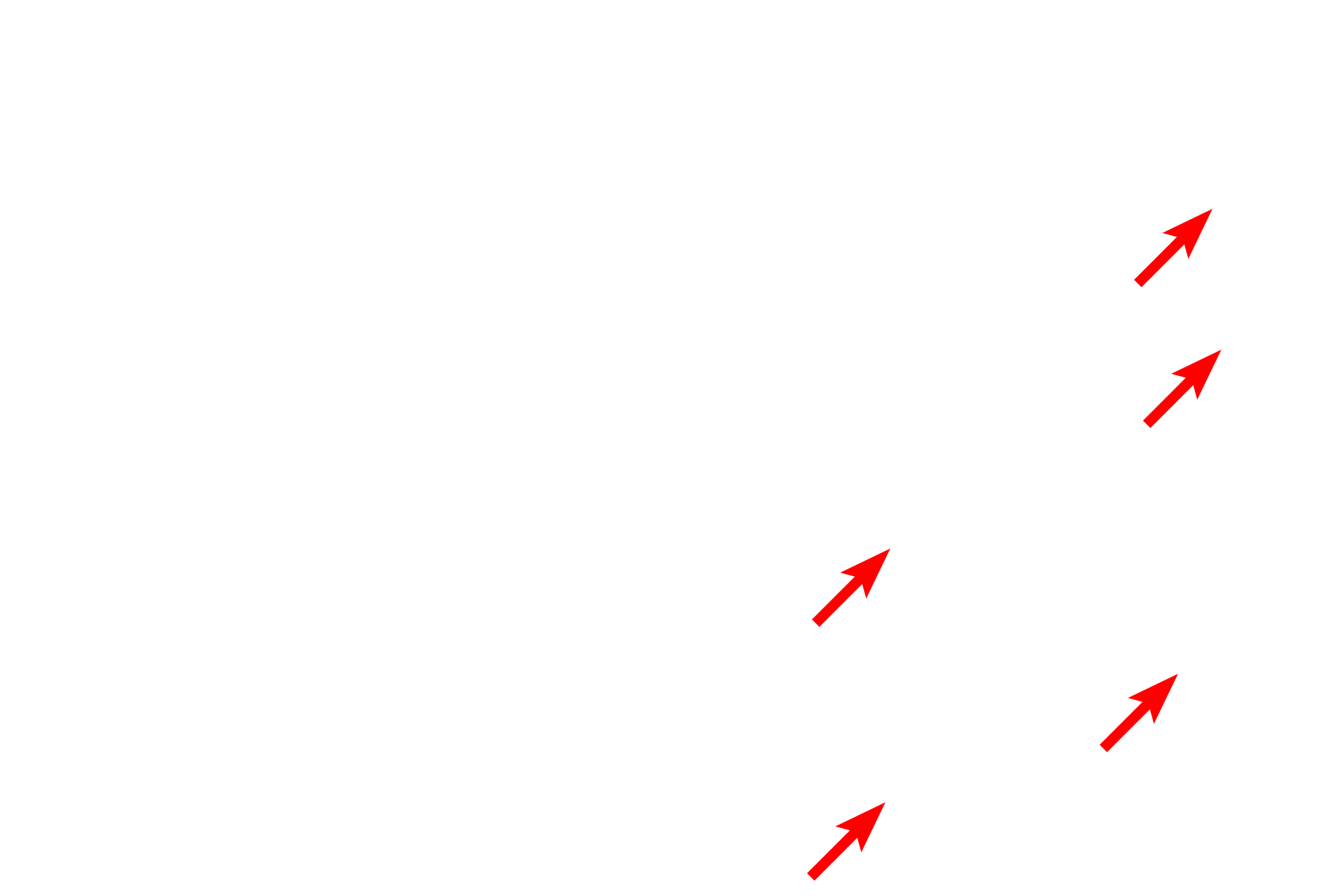
Basic tissues
The four tissues of the body include epithelium, connective tissue, muscle and nervous. Muscle and nervous tissue are illustrated in this image. Left: 400x, 600x; Right: 400x, 400x

Muscle tissue
Muscle tissue is composed of abundant cells and minimal extracellular matrix. Muscle cells are elongate in shape and usually clustered into bundles with a similar orientation, so that they produce coordinated contraction. Muscle tissue is broadly classified as either non-striated (smooth muscle) or striated (skeletal and cardiac muscle). Striations, shown in this section of skeletal muscle, appear as distinct cross-bands in the cells.

Muscle cells
Muscle tissue is composed of abundant cells and minimal extracellular matrix. Muscle cells are elongate in shape and usually clustered into bundles with a similar orientation, so that they produce coordinated contraction. Muscle tissue is broadly classified as either non-striated (smooth muscle) or striated (skeletal and cardiac muscle). Striations, shown in this section of skeletal muscle, appear as distinct cross-bands in the cells.

Nuclei
Muscle tissue is composed of abundant cells and minimal extracellular matrix. Muscle cells are elongate in shape and usually clustered into bundles with a similar orientation, so that they produce coordinated contraction. Muscle tissue is broadly classified as either non-striated (smooth muscle) or striated (skeletal and cardiac muscle). Striations, shown in this section of skeletal muscle, appear as distinct cross-bands in the cells.

Non-striated (smooth) muscle
Muscle tissue is composed of abundant cells and minimal extracellular matrix. Muscle cells are elongate in shape and usually clustered into bundles with a similar orientation, so that they produce coordinated contraction. Muscle tissue is broadly classified as either non-striated (smooth muscle) or striated (skeletal and cardiac muscle). Striations, shown in this section of skeletal muscle, appear as distinct cross-bands in the cells.

Striated muscle
Muscle tissue is composed of abundant cells and minimal extracellular matrix. Muscle cells are elongate in shape and usually clustered into bundles with a similar orientation, so that they produce coordinated contraction. Muscle tissue is broadly classified as either non-striated (smooth muscle) or striated (skeletal and cardiac muscle). Striations, shown in this section of skeletal muscle, appear as distinct cross-bands in the cells.

- Striations
Muscle tissue is composed of abundant cells and minimal extracellular matrix. Muscle cells are elongate in shape and usually clustered into bundles with a similar orientation, so that they produce coordinated contraction. Muscle tissue is broadly classified as either non-striated (smooth muscle) or striated (skeletal and cardiac muscle). Striations, shown in this section of skeletal muscle, appear as distinct cross-bands in the cells.

Nervous tissue >
Nervous tissue, with abundant cells and minimal extracellular matrix, is composed of nerve cells (neurons) and their supporting cells. Neurons are specialized to conduct electrical impulses, convey sensory stimuli from the environment, and produce appropriate motor responses. Additionally, nervous tissue provides integration and storage of information.

Nerve cell bodies
Nervous tissue, with abundant cells and minimal extracellular matrix, is composed of nerve cells (neurons) and their supporting cells. Neurons are specialized to conduct electrical impulses, convey sensory stimuli from the environment, and produce appropriate motor responses. Additionally, nervous tissue provides integration and storage of information.

Nerve cell processes
Nervous tissue, with abundant cells and minimal extracellular matrix, is composed of nerve cells (neurons) and their supporting cells. Neurons are specialized to conduct electrical impulses, convey sensory stimuli from the environment, and produce appropriate motor responses. Additionally, nervous tissue provides integration and storage of information.

Supporting cells
Nervous tissue, with abundant cells and minimal extracellular matrix, is composed of nerve cells (neurons) and their supporting cells. Neurons are specialized to conduct electrical impulses, convey sensory stimuli from the environment, and produce appropriate motor responses. Additionally, nervous tissue provides integration and storage of information.
 PREVIOUS
PREVIOUS